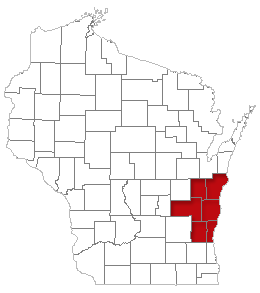This year, more than four-million families throughout North America will be seeking a home of their own. Unfortunately, there are among them some who will attempt to save the few hundred dollars that it costs to enlist the services of a professional home inspector. The risks involved in buying a previously owned home run the gamut from a simple, relatively inexpensive problem such as additional attic insulation to an expensive septic tank replacement. A good home inspection consists of a two-hour-or-more examination of the home’s structural, mechanical and electrical elements. From top to bottom, inside and out. If there are major, costly problems in a house, a qualified inspector should uncover them. When shopping for a home inspector, try to avoid a firm that might have conflicting interests, such as those that are in the home repair business.
Furnace Servicing
In winter, your furnace constantly cycles on and off all day, every day for months at a time. Today you’ll learn what you should do in return to ensure happy days for both the furnace and you! A forced-air furnace is easy to take for granted. It’s basically quiet, out of sight, and simple in theory (or so we think!) But in reality, furnaces are complex technology. First, they run on expensive fuels, so maintaining peak efficiency is important. They turn on and off dozens of times every day, so calibration and lubrication comes into play. They also process more dust than a vacuum cleaner, so filtration and cleaning are extremely important. Then there are the years of extreme temperatures that can fatigue and crack the metal heat exchanger, allowing carbon monoxide to escape… and creating a potential fire hazard! Want to ensure lots more ?happy days? for both your furnace and you? Have it serviced professionally at least once a year… and enjoy!
Fireplace Brick and Stone Cleaner
Is your fireplace a mess? Does the brick on the front look like the entrance to a coalmine? Would the scientific community consider it a black hole? Here’s how to remove baked-on soot, dirt and grease from brick and stone fireplaces. Add 1 cup of laundry soap flakes to 4 cups of hot water. Then add 1-half pound of powdered pumice, which is ground volcanic rock used for polishing. Hardware stores have it, and so do most jewelers. Then add a half-cup of ammonia. Scrub sooty areas with this mixture using a stiff brush and rinse with clear water. Repeat until clean.
Filter Tip
With fall officially under way, and winter just around the corner, it’s time to think about filters. Today we’ll give you a filter tip — not for cigarettes — but for furnaces and air conditioners. It’ll help, especially if you’ve got allergies and are sensitive to dust and pollen. From deep within the Carey Brothers’ vault of breathing easy without hacking and wheezing, we bring a breath of fresh air that we hope will be pleasing. When it’s time to change filters in the furnace or air conditioners, some folks use a spray-on filter treatment that increases a filter’s dust-grabbing ability. This soups up the filtering “horsepower” to catch more airborne dust and pollen. But you can do what we Carey Brothers do. Give each filter a good spritz of your wife’s favorite household dust-mop spray. It does essentially the same thing as the special spray — and works, perhaps, even better. And, it’s less expensive, too.
Deck the Halls with care
Today is “World Poinsettia Day” named for Dr. Joel Poinsett who introduced this rare tropical Central-American plant to the United States in the early 1800s. Whereas holiday flowers and plants such as this one are seasonal and beautiful, serious danger lurks within. When poinsettias are damaged, a milky-white substance appears that can cause skin irritation and internal distress. Many other holiday favorites are dangerous, too — holly mistletoe and the Christmas rose, among them. They’re poisonous, as are poinsettias. Thus, as pretty as they may be, they need special care and should be kept away from small children and pets. After handling these plants, wash your hands thoroughly to prevent ingesting any toxic poisons or contaminating food, clothes or other surfaces.
Deck Maintenance
In many parts of the country weather has changed. Thus, family activities have moved indoors. This means you’ll never have the deck more available for deck maintenance than now. But if you’re waist deep in snow, you might have to wait a bit. But if it’s just chilly and gray, that’s an ideal time. Perform a full inspection of all surfaces — looking for boards that need repair or replacement. If one is damaged or has cupped or checked, flip it over or exchange it with a better one from another location. Once things are all tightened, secured and ship-shape, test to see if it is time to reseal. Then consider those special touches you’ve wanted — like benches and planters. The weather might not be the best, but you won’t have kids, dogs or relatives to contend with either. So hit the deck.
Crumbling Grout
You’ve just laid tile and added grout. Now it’s crumbling and coming out. You can end this problem and stop making a mess if you know the five steps to grouting success. If you have a wood subfloor, be sure you use a concrete backer board. Make sure the thin-set mortar is not too dry. To check, lay a tile and pull it up to make sure at least 75 percent is covered. Don’t mix up more mortar than you can use in a half-hour. Mix your grout with an acrylic additive and use sanded grout on all joints over 1/8-inch wide. If you follow these five simple steps your grout will stay nice, and never will be a crumbling mess. Your kitchen- or bathroom floor will stay good as new.
Clothes-dryer Maintenance
The Mayflower arrived on this date in 1620, and the Pilgrims set foot on Plymouth Rock. Unfortunately it was slippery and some fell in. That wouldn’t have been so bad if they had clothes dryers back then. If they did, they’d have needed to check their dryer vents to be sure they weren’t clogged with lint. It’s something you should be doing regularly. It’s one of the leading causes of residential fires (due to excessive heat build-up). In electric dryers, too much heat can also trigger the thermal-temperature fuse, a one-time shutdown device that only a pro can replace. You can also trigger it by opening the door and stopping mid-cycle because the heaters below are red hot. So, always turn the dial to air-dry before opening. Clean lint screens and exhaust vents often. Heat build-up wastes time and money — and sometimes lives. Be both lint-free and worry-free. And that’s the On The House tip for today.
Cleaning Refrigerator Coils
Refrigerators have coils that cool circulating refrigerants when air passes over their surface. But over time they get dirty and block airflow, causing the compressor motor to run longer to cool things down, and causing your electric bill to soar. Instead, remove the bottom grille in front, and vacuum the coils with a crevice tool. To reach way in back, tape a cardboard tube from a roll of paper towels onto the end. Do it every month and watch energy bills come down.
Cleaning Bathroom Mildew
Today is groundhog day, and it is said if the aforementioned critter sees his shadow we will have six more weeks of winter. However, if you look in your bathtub today and see a shadow, it’s an entirely different situation — most likely a little home-grown science experiment known as mildew. Once it’s there, it’s tough to remove. No matter how hard or how much you scrub, the dark shadow of mildew discoloration lingers on. The formula for fighting mildew is simple, but effective. Just add 1 quart of liquid laundry bleach to 3 quarts of warm water. Then add 1-third cup of powdered laundry detergent, and mix well. Scrub this solution on the fungus-darkened area, keeping it wet until the black mildew turns white. When it clears up, the mildew fungus is dead. As always, wear rubber gloves, protect your eyes, have plenty of ventilation.






